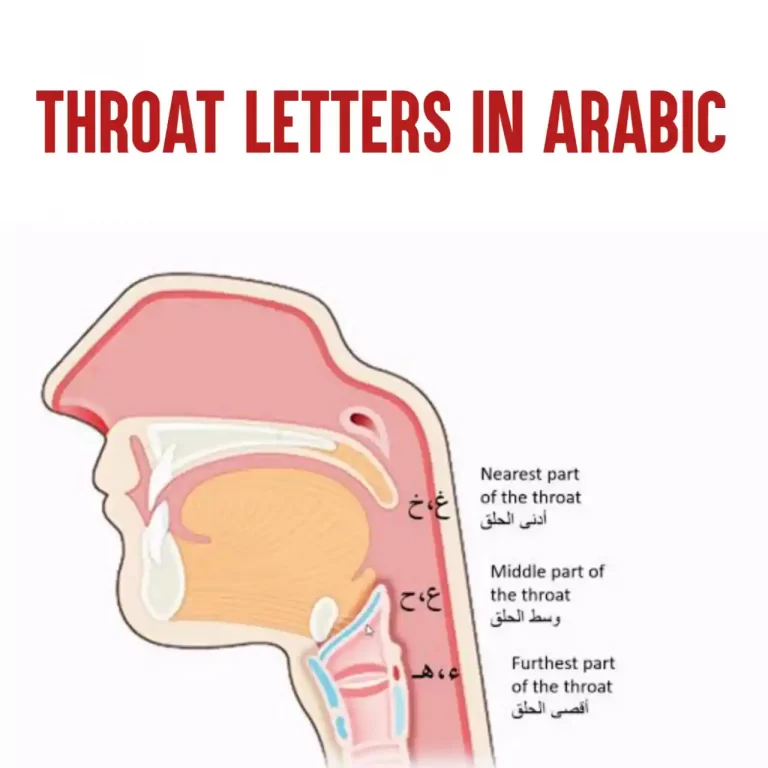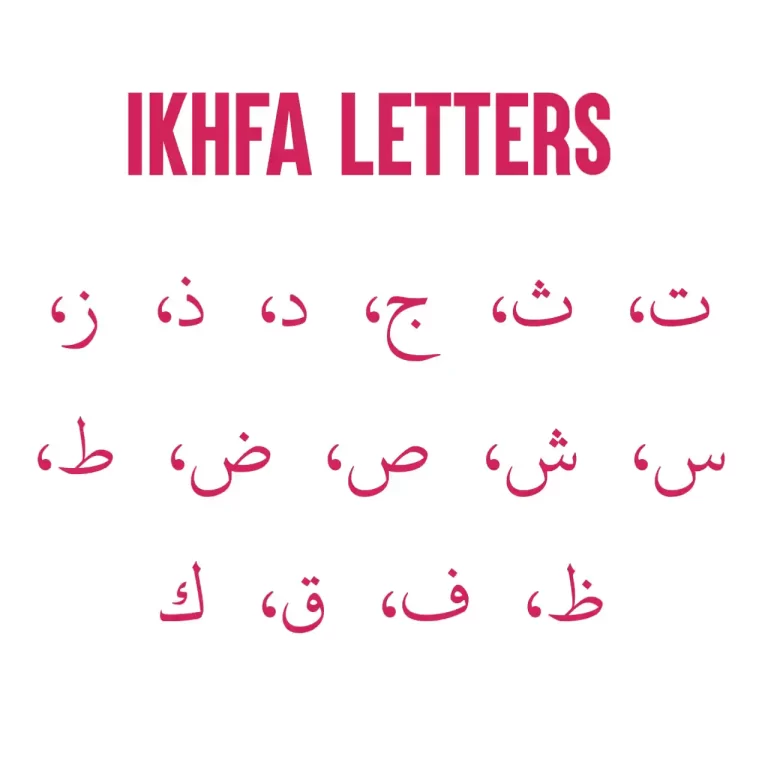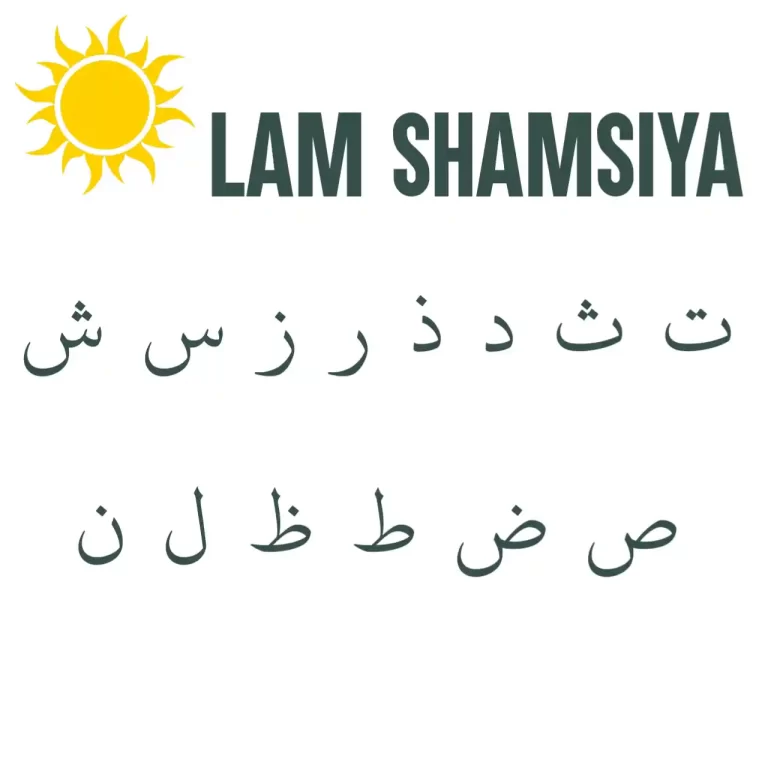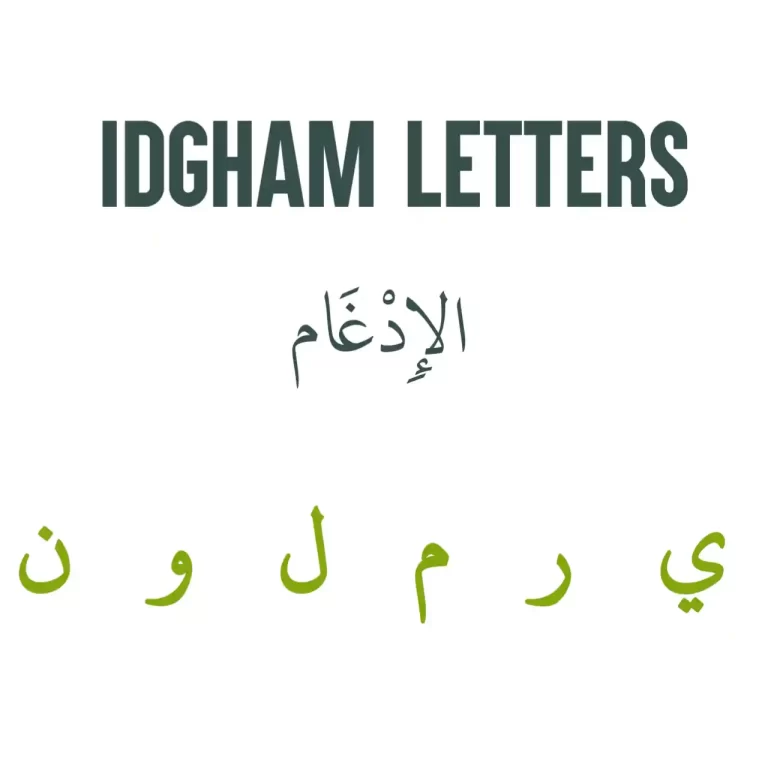Whistling Letters In Arabic With Examples
Advertisements
In this lesson, we will learn all the whistling letters in Arabic with their examples.
Whistling Letters In Arabic
In Arabic, whistling letters are called الصفير and pronounced As-Safeer. They produce sound similar to that of a bird, bee which can be described as either a buzzing or whistling sound.
The sound emerging from the tip of the tongue and upper front teeth, audible even when reciting in a whisper.
The letters always have this sound no matter what harakaat (vowels), though the Safeer becomes stronger when it carries a Sukoon.
A natural whistling sound produced when the letter is pronounced and air moves through constricted passage way.
Advertisements
The three whistling letters are:
- س
- ز
- ص
The strongest whistle is in letter ص, then ز, and then س. A small amount of space needs to be left between the tongue and the top palate when pronouncing these letters.
Note that the letter zaay has a more buzzing sound than the whistling sound in seen and saad.
Sin س
The س (seen) is a weak letter, and a thin letter (Muraqaqa). When pronouncing thin (muraqaqa) letters like س (seen) keep the side of the mouth apart. س (seen) would sound sort of like sat.

It has these characteristics:
Advertisements
- Hums الهمس – when pronounced you can feel air coming out of your mouth.
- Rikhawat الرخاوة – weak, sound continues to resonate and does not stop with force.
- Istifal الاستفال – thin letter, keep the jaw more closed and lips apart.
- Infitah الانفتاح – keep the tongue away from the roof of the mouth.
- AsSafeer الصفير – Whistling letter.
The س (seen) should be clearly pronounced thin, if there is any letter from the letters of the alphabet after it, like:
- لَسَلَّطَهُمْ
- السَّمَاءَ
- لَا يُسْئَلُ
Especially if after it is one of the letters of Itbaq (الإطباق) which are ص (saad) ض (dhaad) ط (taw) ظ (thaw):
- بَسْطَةً
- مَسْطُورًا
The ن (nun) sakinah and tanween is pronounced with ikhfaa (hiding) when it is followed by س (seen) like:
- مِنسَأَتَهُ
- أَن سَيَكُونُ
- وَ رَجُلًا سَلَمًا
The م (meem) sakinah is pronounced clearly when it is followed by س (seen) like:
- وَبَنَيۡنَا فَوۡقَكُمۡ سَبۡعً۬ا شِدَادً۬ا
The س (seen) is a sun letter, meaning the ل (lam) in the definitive article ال is eaten up when it is followed by a س (seen) like:
- ٱلسَّـٰٓٮِٕحُونَ
In other places of ل (lam) , it is pronounced clearly when followed by س (seen) like:
- قُلۡ سَأَتۡلُواْ عَلَيۡكُم مِّنۡهُ ذِڪۡرًا
- قَالَ بَلۡ سَوَّلَتۡ لَكُمۡ أَنفُسُكُمۡ أَمۡرً۬اۖ فَصَبۡرٌ۬ جَمِيلٌ۬ۖ
RELATED READINGS: Soft Letters In Arabic With Examples
Sad ص
The ص (sawd) is thick letter. When pronouncing thick (mufakhama) letters like ص (sawd) keep the side of the mouth together, and the jaw more open. ص (sawd) which is a thick letter would sound like sought.

It has these characteristics:
- Hums الهمس – when pronounced you can feel air coming out of your mouth.
- Rikhawat الرخاوة – weak, sound continues to resonate and does not stop with force.
- Istaala الاستعلاء – thick letter, keep the jaw more open and lips close together.
- Itbakh الإطباق – keep the tongue close to the roof of the mouth.
- AsSafeer الصفير – Whistling letter.
The ص (sawd) should be pronounced thick, if there is after it a ت (ta) so that it does not come close to the sound of س (seen):
- حَرَصْتُمْ
Pronounce it clearly if after it is a ط (taw) or a د (dal) like:
- ٱصۡطَفَىٰٓ
- يُصۡدِرَ
- وَتَصۡدِيَةً۬
The ن (nun) sakinah and tanween is pronounced with ikhfaa (hiding) when it is followed by ص (sawd) like:
- فَٱنصُرۡنَا
- وَ لَمَن صَبَرَ
- عَمَلًا صَـٰلِحًا
The م (meem) sakinah is pronounced clearly when it is followed by ص (sawd) like:
- عَلَيۡہِمۡ صَلَوَٲتٌ۬ مِّن رَّبِّهِمۡ وَرَحۡمَةٌ۬ۖ
The ص (sawd) is a sun letter, meaning the ل (lam) in the definitive article ال is eaten up when it is followed by a ص (sawd) like:
- ٱلصَّـٰدِقِينَ
In other places of ل (lam), it is pronounced clearly when followed by ص (sawd) like:
- قُلۡ صَدَقَ ٱللَّهُۗ
Zai ز
The ز (zai) is a weak letter and a thin letter. When pronouncing thin (muraqaqa) letters like ز (zai) keep the side of the mouth apart, and the jaw more closed. The thick letters have a “o” sound, and the thin letters have an “a” sound.
The ز (zai) is emitted from the tip of the tongue, at a location between the top and bottom front teeth, closer to the bottom. This letter is also referred to as a whistling (safeer) letters.

It has these characteristics:
- Jahr الجهر – No air coming out when pronounced.
- Rikhawat الرخاوة – weak, sound continues to resonate and does not stop with force.
- Istifal الاستفال – thin letter, keep the jaw more closed and lips apart.
- Infitah الانفتاح – keep the tongue away from the roof of the mouth.
- AsSafeer الصفير – Whistling letter.
Be clear on the characteristic of jahr (no air coming out of the mouth) when it has a sakoon like:
- أَزْكَاى
- رِزْقًا
- مُزْجَاةٍ
Be clear if after it comes a letter of hums (air coming out of mouth) so that it does not sound like س (seen) like:
- هَـٰذَا مَا ڪَنَزۡتُمۡ
Likewise if it is voweled, or has a shadda, or is repeated like:
- ٱلۡمِصۡبَاحُ فِى زُجَاجَةٍۖ ٱلزُّجَاجَةُ كَأَنَّہَا كَوۡكَبٌ۬ دُرِّىٌّ۬
- فَعَزَّزۡنَا
The ن (nun) sakinah and tanween is pronounced with ikhfaa (hiding) when it is followed by ز (zai) like:
- أُنْزِلَ
- فَإِن زَلَلْتُم
- نَفۡسً۬ا زَكِيَّةَۢ
The م (meem) sakinah is pronounced clearly when it is followed by ز (zai) like:
- أَيُّڪُمۡ زَادَتۡهُ هَـٰذِهِۦۤ إِيمَـٰنً۬اۚ
The ز (zai) is a sun letter, meaning the ل (lam) in the definitive article ال is eaten up when it is followed by a ز (zai) like:
- ٱلزَّٲهِدِينَ
Advertisements








One Comment